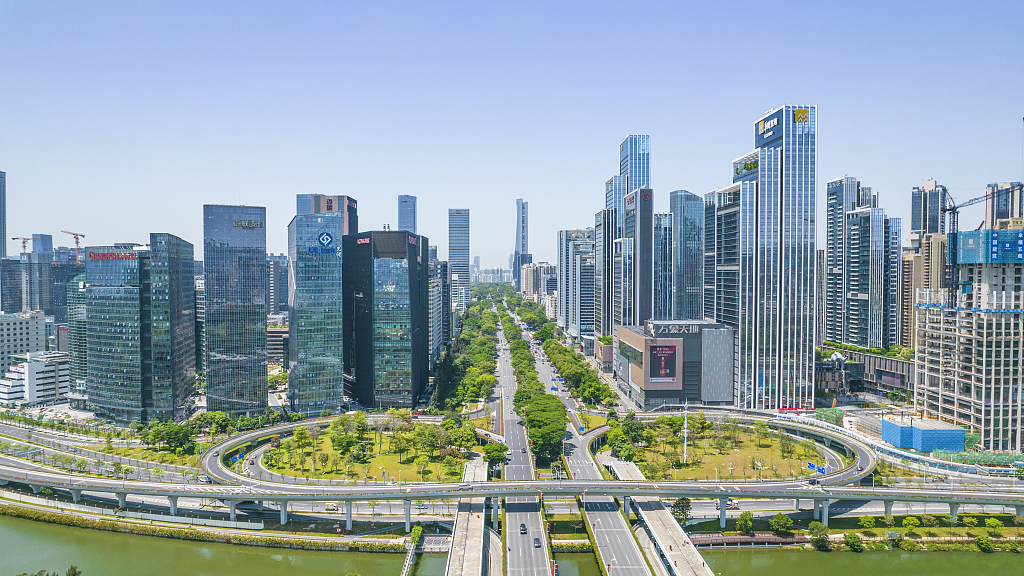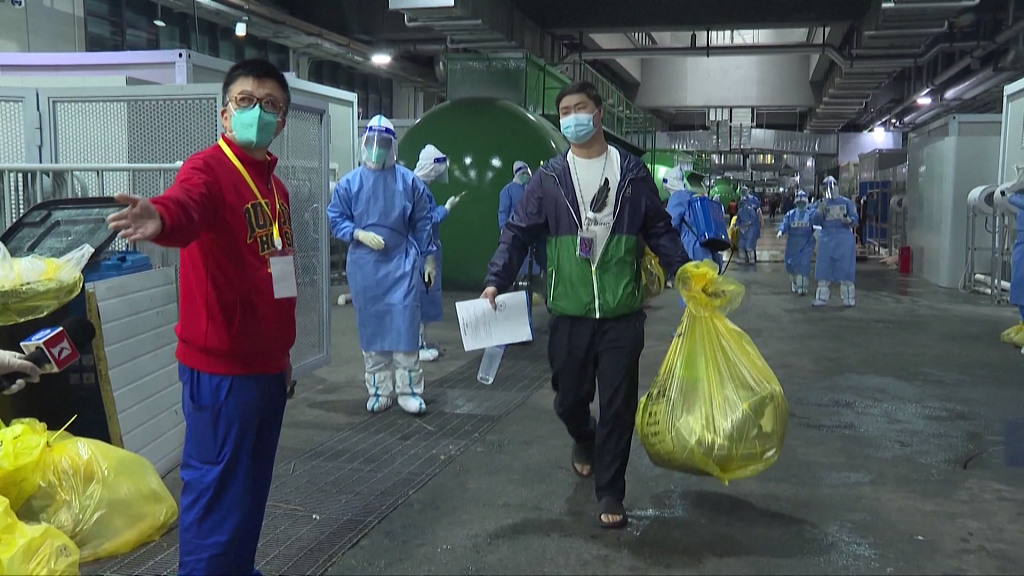
An aerial view of Shenzhen, China, April 9, 2022. /CFP
An aerial view of Shenzhen, China, April 9, 2022. /CFP
Editor's note: Liu Chunsheng is an associate professor at the Beijing-based Central University of Finance and Economics. The article reflects the author's opinions and not necessarily the views of CGTN.
China's National Bureau of Statistics released the economic figures for this year's first quarter on April 18. Amid pressures from a complicated and gloomy international environment and a resurgence of COVID-19 cases, China's GDP growth reached 4.8 percent, which is better than market expectations.
As the world's second largest economy, the largest foreign trade country, the largest single country market, and the center of global manufacturing, China's economic growth is bound to attract global attention.
The quarterly growth rate of 4.8 percent is lower than the annual growth rate of 8.1 percent in 2021 as well as the target annual growth rate of 5.5 percent in 2022. However, it is higher than the growth rate of 4 percent in the fourth quarter of 2021, with a quarter-on-quarter growth of 1.3 percent. Under the increasingly severe internal and external pressures, the Chinese economy is still showing resilience.
In fact, China's economy had a good start in the first two months of 2022. Driven by a series of proactive macro policies, the manufacturing Purchasing Managers' Index (PMI) exceeded 50 in January and February, indicating growth, while the price level remained relatively stable. The national fixed asset investment increased by 12.2 percent year on year, the total retail sales of social consumer goods increased by 6.7 percent year on year, and the total import and export of goods increased by 13.3 percent.
However, since March, the pandemic and the Ukraine crisis have been impacting the stable recovery of China's economy. China's manufacturing PMI and non-manufacturing PMI have both entered the contraction range. The main macro indicators, such as production, consumption and exports, have fallen, the urban unemployment rate has rebounded to 5.8 percent, and the downward pressure in China's economy is growing.
Despite the difficulties of economic recovery, there are still some highlights in the economic data in the first quarter:
First of all, the external demand remained steady and China's foreign trade kept a stable growth. In the first quarter, China's trade volume in goods increased by 10.7 percent, and trade with main partners regions all rose. Among them, China's total trade volume with the countries along the Belt and Road increased by 16.7 percent, compared with the same period last year. Foreign trade is still an important driving force for China's economy.
Secondly, when many countries around the world are facing huge inflationary pressure, China's price level remained stable. In the first quarter, the Consumer Price Index rose by 1.1 percent year on year, and the core CPI after deducting food and energy prices rose by 1.2 percent year on year.
Thirdly, the high-tech industry maintained a rapid growth momentum. The investment in high-tech manufacturing and service industry increased by 32.7 percent and 14.5 percent, respectively, the added value of high-tech manufacturing increased by 14.2 percent, and the output of new energy vehicles, solar cells and industrial robots increased by 140.8 percent, 24.3 percent and 10.2 percent, respectively.

COVID-19 patients are discharged from hospitals after recovery, Shanghai, China, April 14, 2022. /CFP
COVID-19 patients are discharged from hospitals after recovery, Shanghai, China, April 14, 2022. /CFP
The triple pressures of shrinking demand, supply shock and weakening expectations confronting China's economic development have not changed. We should have a full understanding of the challenges.
First of all, the outbreak of COVID-19 in Shanghai which is China's economic, financial, trade and shipping center has lasted about a month since late March. Its impact on China's economy is gradually emerging, which will undoubtedly affect China's economic performance in the second quarter.
Secondly, due to the increasing pressure on pandemic prevention and control, the operation of catering, retail, tourism, transportation and other service industries is meeting severe challenges, and many small enterprises are experiencing a critical point of survival.
Additionally, there is no sign of easing of Russia-Ukraine crisis. International commodity prices have risen sharply, the supply chain of energy and raw materials is facing great uncertainty, and the pressure of imported inflation is increasing. Therefore, enterprises are facing double pressure of supply and demand.
Moreover, developed economies, including the United States and some European countries, have withdrawn from the policy of easing, and the Fed may raise interest rates by a larger margin which will lead to a huge impact on global liquidity and financial markets. Such financial risks should not be ignored.
In order to cope with the downward pressure of the economy, the top priority is to control the pandemic as soon as possible. Efforts must be made to balance COVID-19 curbs with socioeconomic development. Proactive policies should play a more significant role in China's economic performance in the next stage.
(If you want to contribute and have specific expertise, please contact us at opinions@cgtn.com. Follow @thouse_opinions on Twitter to discover the latest commentaries on CGTN Opinion Section.)

